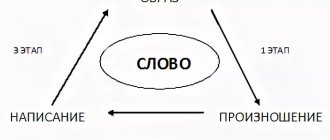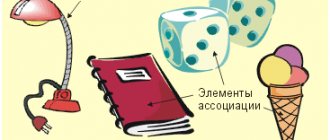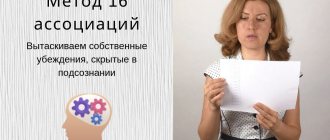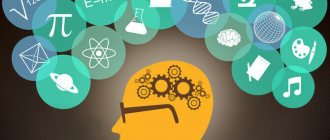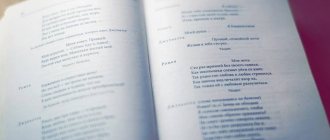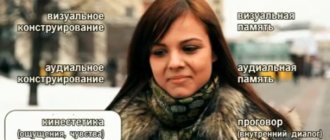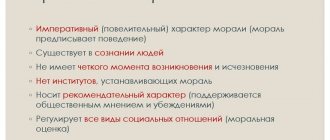- Numbers - images
- Numbers are words
- Numbers - numbers
Do you want to remember phone numbers the first time you hear them? Do you think how nice it would be to enter your bank card number while shopping online without looking anywhere? Do you dream of remembering bus numbers, pages, postal codes without any problems? All this is possible if you choose a suitable mnemonic technique for memorizing numbers and numbers and practice properly in its use.
There are several tricks on how to memorize numbers quickly and without much effort. At the same time, many methods are based on converting numbers into words or images - remembering specific (object) images is much easier than numbers. Mnemonics of this kind can be divided into several subtypes.
Mnemonics (mnemonics): what it is and how to master it
The method of quick memorization is called mnemonics. The combination of various techniques allows you to remember vast amounts of information. Many students, engineers, scientists and ordinary people dream of acquiring such abilities for personal purposes.
Recently, amazing people have been shown on TV who, in one minute, remember 100 cards drawn at random or a hundred small details. Such abilities look like real magic to ordinary viewers.
The secret is that these people have mnemonics. They do not hide the fact that they have completed mnemonics courses and claim that these trainings can develop super-memory in anyone.
An important advantage of technology for memory development is that anyone can master its techniques. Superpowers or specific knowledge are not needed for this. The training will help adults, teenagers and children. It’s easy to train your memory at any age, you just have to want it.
Mnemonic training begins at any age. How successfully you will learn memorization techniques depends only on the time you spend and the effort you put in.
The most important thing is to understand the patterns of memorization, learn the basic principles and apply mnemonics practically. You should constantly improve your skills and not stop there.
You can study mnemonics on your own, using online sources, for free. In this article we will talk about the general possibilities of using mnemonics and reveal some of its secrets.
We learn fun and with pleasure. Chapter for children
Mnemonic tables serve as excellent material and a way to develop coherent speech in children. They have a positive effect on enriching vocabulary, writing stories, and predicting literature. Children who use mnemonics show more stable and better results in guessing and making riddles, memorizing poems and texts.
Use mnemonics in your studies. Parents, master it yourself and together with your child. This will bring you closer together, give you authority, and add play and excitement to your studies. Stop being boring and tedious. The child will be interested in learning. Well, be more creative. Find what interests your child and, based on his interests, act.
For example, if your child spends days playing the computer game “Tanks,” then take advantage of this. Invite him to find out where the battles took place. And, while studying history in this way, teach him, as if casually, mnemotechnical methods for remembering the names of places and dates. Your child will see that studying is not boring, as they are forced to do at school, but is fun, and even something that interests him. And then the process will go even easier.
Mnemonics
In two words, mnemonics is the art of memorization. Mnemonics are techniques and methods of memorization.
Some effective methods have been known to you since childhood. Acrostic method helps the student remember the colors of the rainbow once and for all. Every Hunter Wants to Know Where the Pheasant Sits. The first letter of each word in this nursery rhyme is the same letter as the color of the rainbow. And everyone knows that the rainbow has seven colors: red, orange, yellow, green, blue, indigo, violet.
Using this technique, our ancestors learned the letters of the alphabet. Now this verse is not used, because the letters are already called differently.
Mnemonic phrases help you remember the rules of syntax: putting on clothes, putting on Nadezhda. I can't bear to get married.
A bisector is a rat that runs around the corners and divides the corner in half. These nursery rhymes will help us understand how mnemonics work.
In order to remember well, mnemonics experts advise using a system of images or associations . This is how Einstein's name is associated with physics. The name Ivan sounds similar to sofa. The number eleven is similar in appearance to drumsticks and Chinese chopsticks. Love is associated with the heart.
The story writing method helps you remember unrelated words. Eg:
- A pineapple;
- Drum;
- Crocodile;
- Fan;
- Brick.
Let's come up with a funny story about how a pineapple played a drum, the crocodile didn't like it, he ran towards the drum, but the fan blew him out of the way, and the crocodile hit a brick.
Moreover, the more crazy the story, the sooner it will be remembered.
Very close to this technique is Chain . It involves putting images in a chain in your mind. The pineapple is holding a drum, the crocodile is biting the drum, a fan is hanging on its tail, and a brick is lying at the foot of the fan.
By imagining such a funny picture in your mind, you will quickly remember five words. In the same way you can memorize 10, 20, 100 unfamiliar words.
The most advanced method of memorization is considered to be the Location method . To use it, you should remember in your mind the familiar furnishings of your apartment and designate for yourself all the places with some number. The front door will be number 1, a rug with a pair of shoes will be 2, a cassette with clean shoes will be 3, a coat rack will be 4, a shelf for hats will be 5.
If we now attach a pineapple to the door, put a drum on the rug, put a crocodile in the cassette, hang a fan on a hanger and hide a brick on the shelf between the hats, we will also remember these words that we heard recently for the first time.
You can also think about the route you take every day to work.
Colors to help
The use of bright colors and shades has a beneficial effect on the child’s psyche and serves as a kind of color therapy:
- bright colors always lift your mood and vitality;
- a box of 18 or 24 colored pencils will allow the child to feel more confident - he will have many colored helpers;
- bright colors have a positive effect on the unformed child’s psyche, the child’s fear of the new and unknown disappears.
How color diversity works can be seen in the following examples:
- The child will be happy to color both the large number and the picture for it. For example, for “seven” there is a painted rainbow, for “three” there is a fairy-tale family of bears.
- Having studied the new number, let's try using colored pencils to color the clothes of the characters in a children's coloring book, applying a “digital print” to it.
Mnemonics exercises for beginners
Advice for beginning audiences: stay calm. To learn new information, you must remain calm. This is necessary so that unnecessary emotions and anxiety do not get mixed up with the associations that you build in your head for coding. In addition, it will be difficult to understand for yourself which method suits you best.
It is useful for a beginner to understand the principles of mnemonics and choose appropriate techniques. It has been noticed that it is more difficult to remember isolated objects and unrelated numbers. It is easier to remember the connections between objects. It is good to connect already known information with new information.
It is easier to remember logical, figurative, emotional, vivid associations, rather than the objects themselves. Through these connections, information is easier to find in memory and reproduce.
If there are no such connections, they need to be created. This is the essence of memorization in mnemonics.
Mnemonics works as follows:
- abstract data is taken;
- connections are created between them - coding occurs;
- memorization, repetition in a convenient form;
- decoding, decoding;
- reproduction of the necessary data that needed to be remembered.
This is the sequence in which data is processed. Beginners should not be intimidated by this seemingly complex process. If you practically start applying the advice of the masters, it turns out that it is not as difficult as it seems.
Mnemonics allows beginners to use those images and associations that are closer to them, and it is easier to retain them in memory.
Numbers - images
One of the simplest tricks on how to learn to quickly memorize numbers is to simply attach an image to each number.
and to remember a sequence of numbers, connect these images with each other as a consequence of a certain chain of actions. A connected story and images are much easier to remember than a dry sequence of numbers. Accordingly, when reproducing, for example, a telephone number, you remember your story and unfold the chain in reverse - from images to numbers.
There are several mnemonics for making such associations. Some find it easier to focus on the external similarity of numbers and objects
. For example, one can be a giraffe, a crane, a stele, a lighthouse... Two - a swan, a pattern, zero - a drying shuttle, a mirror. So 20 could be a swan looking in the mirror. 120 - a swan sitting on a crane, looking in the mirror. A swan sitting on a crane, looking in the mirror, saw a nesting doll - 1208.
Another variation of this method is associations with the “content” of a particular number, and not with its appearance
. For example, 2 are sushi chopsticks (because there are two of them), 7 is a rainbow, 0 is a candy wrapper (the candy itself has already been eaten, only the candy wrapper remains). Then 27 is sushi sticks stuck into a rainbow. 270 - sushi chopsticks, with which someone is trying to put a candy wrapper on a rainbow.
How to remember lists
The techniques described help you remember lists. We sometimes have to take a long list of groceries with us to the store, which is awkward to hold in our hands and difficult to remember.
The list of necessary things for the trip and the performance plan also look like a list. People also like to remember anecdotes and stories, tricks. You can remember useful information in the form of lists.
It is more convenient to remember all this using mnemonics.
This technique allows you to remember lists for a short time.
Let's remember the first ten words by what they look like:
- Pillar, lantern;
- Swan;
- Butt, ear;
- Upside down chair, flag;
- Hook;
- Cherry;
- Poker, stick;
- Woman, guitar;
- Balloon;
- Golf.
The second ten – by sound:
- Order, God One;
- Creature;
- Trio;
- Crap;
- Heel;
- Pole;
- Seeds;
- Wasps;
- Virgo;
- Despot.
We need to remember the list:
- Fur coat;
- Beet;
- Herring;
- Potato;
- Bike;
- Sausage;
- Candies;
- Soda;
- Jam;
- Milk.
To remember these words, let’s imagine a fur coat hanging on a lantern, a beet in a swan’s beak, a herring slapping its butt, a potato sitting on a chair, a bicycle with a hook in the tire. And for each word you need to come up with your own crazy story connecting it with numbers from 1-10.
The more fun and unexpected the story, the sooner it will be remembered. The brain notes everything unusual and extraordinary.
Link the next ten of the list with numbers from 11 to 20.
List:
- Telephone;
- Coach;
- TV;
- Bed;
- Octopus;
- Shirt;
- Mittens;
- Mousetrap;
- Pie;
- Honey.
Let's imagine an order with an image of a telephone, in which a terrible creature rides. A TV with a trio dancing on the screen. The bed where the Devil sleeps. The octopus grabs the heel. The shirt is hanging on a pole. The mittens are full of seeds. Wasps caught in the mousetrap. The virgin baked a pie. The despot feeds everyone with barrels of honey.
Now let's try to reproduce the list and see that we can do it, even scattered.
At what age should a child know numbers?
The answer to this question is the personal experience and unique author’s child development program of Masaru Ibuka, a famous Japanese businessman, founder and chief engineer of the Sony Corporation. The title of his publication speaks very categorically for itself: “After three years it’s too late.”
All psychologists and teachers agree with him: until the age of three, a child’s brain is so plastic, free, malleable, inquisitive and efficient that not taking advantage of its capabilities during this period is simply a crime.
An interesting fact: before the age of seven, a child manages to master a volume of information that is comparable only to the amount of knowledge acquired by a person over the course of his entire life.
If the baby has no problems with the sign system, and parents are interested in knowing how and how their child lives, then the child can master numbers and even letters without any problems at three or even two years old.
We teach the little ones
With kids everything is simple: bright, funny, mobile things always attract them:
- Therefore, we use soft toys-numbers, poems about them and counting, and the child will involuntarily become interested in symbols that are still unfamiliar to him.
- Wallpaper in a nursery with numbers works well in this regard (a train with numbered carriages, animal houses on a forest street).
- Children love to sculpt, which means we play with plasticine and dough and make digital signs. You can even bake cookies from the dough.
Learning numbers for little “Einstein” is a very interesting activity. Children can be easily encouraged to take educational lessons at any age, as long as this process does not force the child’s psyche. It is children who are most interested in symbols, and if adults limit themselves to indifference at best, then a painful acquaintance with numbers for a child will drag on until the age of five or six. Adults must remember that it is necessary to teach a child anything on time: a spoon is dear to dinner.
Education at 4 years
A child of 4 years old is already a junior preschooler, so much more demands are placed on his mental development than before.
The time has come to actively work on fine motor skills of the hand. The easiest way to do this is in the process of all children’s favorite activity - drawing.
The child will learn to distinguish numbers and correlate them with a certain (specific) quantity, as well as draw them independently.
Drawing will optimally prepare your child for writing thanks to:
- development of small muscles of the hand;
- active formation of visual and motor images of each of the numbers.
Drawing steps:
- several times the baby draws a large number;
- draws smaller images.
It is important for children to be able to draw materials of different colors - then the exercises will bring joy.
The development of hand-eye coordination is facilitated by tasks such as “trails”:
- Using multi-colored pencils, a child goes through a race track drawn on paper, intricate and winding. You need to avoid flying off the road when turning.
- Cut out roads of complex shapes from cardboard or thick paper and organize Formula 1 competitions, driving small toy cars along the track.
This game will also make it easier for your child to learn to write.
It is advisable to select tasks structured in such a way as to ensure the development of attention and the beginning of logical thinking, as well as to provoke it to non-standard solutions:
- We look at the number with the baby and try to find objects around that are at least somehow associated with the number in appearance (shape).
- We make a number from salt dough, from plasticine, lay it out using pasta, matches, write on the asphalt, on the sand, on the snow.
- We read S. Ya. Marshak’s “Let’s Get Acquainted” and try to learn what we liked.
Adults should pay attention to the following in this children's activity:
- Is the child sitting correctly (taking care of posture and vision);
- how to hold a brush, pencil, wax crayon, felt-tip pen;
- The baby should always have enough materials for his favorite activity: albums, pencils, crayons, coloring books, stencils;
- All classes should be conducted only in a playful way and only if the child wishes.
Classes for ages 5-6 years
After the stage of familiarizing the child with the process of forming any number, you can begin to communicate closely with numbers.
He will know both the printed version, which he will see in a newspaper, magazine, book, and the handwritten version - in the notebook of the older children in the family.
It is possible to teach a child aged 5-6 years more carefully and purposefully, because this is the average pre-preschool age and requires a more attentive attitude of adults to the knowledge and skills of the child:
- If the baby has no problems with the sign system, he calmly remembers and quickly learns to recognize and recognize the graphic image of all ten numbers, and if he does, he has difficulty remembering some numbers and gets confused.
- Children with speech therapy have a mirror perception of numbers and more often this happens with the numbers: 1, 3, 4, 5, 6, 7.
Some digital signs require special attention:
- 3 - similar to the letter “Z” for preschoolers who have already mastered the Russian alphabet.
- 4 - the printed image is perceived in two ways due to variability in printing, and the written one is similar to the letter “H”.
- 6 and 9 - it is difficult for children not to confuse them, because the graphic images of these numbers differ only in their rotation around their own axis by 180°.
Mnemonics for memory development for adults: the best exercises
You can come up with different memorization techniques. If the number of letters in a word is counted as a number, then you can remember a complex long number. For example, the root of two: 1.4142135623. A funny poem will help with this.
“I’m Dusya, I’m a fool, but I found the root of two.”
Methods of mnemonics called Rhyming help you remember boring laws of physics. “A body pressed into water bulges out with the force of the water pushed out by the body pressed there,” this is Archimedes’ law.
Consonance techniques are suitable for learning foreign words. The word Swing is to swing, similar to the Russian pig. Imagining a pig swinging on a swing, let us remember the English word for a long time.
Long English words can be broken down into short ones for easier memorization.
Mnemonics methods for memorizing texts
Cicero, going to his next public performance, always followed the same road. The road was familiar to him, from bush to pebble. The key words with which the blocks into which Cicero divided the texts began, he pronounced in his mind in those places that he remembered along the route.
To memorize texts, learn the route you take every day to work or school. Keywords should be associated with points on the road that you remember by heart. It is good to divide the text into paragraphs or chapters, small parts. Then you will be able to surprise your friends and teachers by reciting the text without errors.
Online course “Mnemonics”
The online course “Mnemonics” is 15 lessons from Vikium, after which you will be able to:
- Master mnemonics and use them in everyday life.
- Remember as much necessary information as you like.
- Learn foreign languages faster and easier.
- Learn more effectively in all areas of life.
- Memorize phone numbers by ear.
- Learn poems instantly.
- Amaze your friends with your abilities.
The course includes:
- 7 online trainers for mnemonics.
- A set of key memorization techniques.
- Introductory and final tests.
- Memory development program.
The training costs 920 rubles.
If you don't like the course, you will get your money back within 7 days.
There is a review article on Wikium on our blog, read:
- Brain simulators and courses Vikium - the most detailed and honest review of the online learning platform + reviews
Well, are we studying?
Explore the selection on our blog of the 20+ best courses for memory development.
The best books on mnemonics
Arthur Dumchev “Remember everything. A practical guide to memory development"
This book contains examples of exercises in different ways to develop quick memorization. Arthur memorized the number Pi up to 22529 digits.
Using the author's advice, readers learn to find solutions to complex problems in their minds and operate with long digital chains. Intelligence moves to a new level.
Prices for Dumchev Arthur Remember everything. A practical guide to memory development
Find out more about the book
Roger Sipe, Brain Development. How to read faster, remember better and achieve greater goals"
The collection of the famous author, teacher of strategies and tactics of self-development, presents a number of innovations and methods for better memorization and quick reading.
Roger Sipe Prices Brain Development. How to Read Faster, Remember Better, and Achieve Bigger Goals
Find out more about the book
Joshua Foer Einstein Walks on the Moon. The Science and Art of Memory"
The book tells the story of the period of time that the author spent studying his own memory abilities. For a whole year he revealed internal potentials, hidden mechanisms, protective nuances and trained.
Prices for Joshua Foer Einstein Walks on the Moon. The Science and Art of Memory
Find out more about the book
Tony Buzan "Super Memory"
The author invites the reader to develop the ability to remember, preserve, and reproduce. Tony Buzan's instructions and advice lead to such results when the memory mechanism serves for a long time and without fail.
Prices for Tony Buzan Super Memory
Find out more about the book
Dominic O'Brien "How to develop Super Memory"
Any person, if desired, can remember vast amounts of information, in numbers, events, lists, and in the form of texts. If you don’t believe me, we recommend trying to work with your memory using the O’Brien method. The exercises will give a unique result in a few weeks.
Prices for Dominic O'Brien How to develop Super Memory
Find out more about the book
Denis Bukin “Development of memory using the methods of special services”
The work was released for those who have difficulty remembering information. Denis Bukin teaches how to improve the capabilities of the mind, become bolder in a team, more effective in a career, family, and maximize the potential of thinking.
Prices for Denis Bukin Development of memory using the methods of special services
Find out more about the book
Stanislav Matveev “Phenomenal memory. Methods of remembering information"
Scientists have proven that the ability to remember is trained even more successfully than the biceps. When you start to forget something, you need to train your brain. This gap in your biography can be easily corrected if you read the recommendations of the memory champion among Russians.
Prices for Stanislav Matveev Phenomenal memory. Methods for remembering information
Find out more about the book
Christine Loberg, Mike Beister "Quick Mind. How to forget what is unnecessary and remember what is necessary"
The path to great success is opened by the talent to remember well and process voluminous information faster than others. These talents can be developed, the author believes, by offering unusual ways and interesting exercises.
Prices for Kristin Loberg, Mike Beister Quick Mind. How to forget what is unnecessary and remember what is necessary
Find out more about the book
Neal Barnard, Brain Nutrition. An effective step-by-step technique for enhancing brain efficiency and strengthening memory"
Ten percent of elderly people over the age of seventy have Alzheimer's disease. Neal Barnard recommends healthy eating and exercise to stave off disordered thinking, dementia and memory loss.
Prices for Neal Barnard Brain Nutrition. An effective step-by-step technique for enhancing brain efficiency and strengthening memory
Find out more about the book
Angels Navarro “Memory does not fail. Tasks and puzzles for the development of intelligence and memory"
After getting acquainted with this work, you will learn about the work of the brain, how to maintain clarity of thinking until the last days of life. Angels Navarro suggests solving interesting puzzles, unusual tasks and synthesizing new connections between neurons in the cerebral cortex.
Prices for Angels Navarro Memory serves. Tasks and puzzles for the development of intelligence and memory
Find out more about the book
Harry Lorraine, Jerry Lucas “The Development of Memory. The classic guide to improving memory"
You can achieve real records in various areas of life when you read this simple guide. Potential memorization abilities, the ability to process large amounts of text, numbers and figures will be revealed.
Prices for Harry Lorraine, Jerry Lucas Memory Development. The classic guide to improving memory
Find out more about the book
Counting materials
Depending on which analyzer (visual or auditory) a person has is better developed, the form and method of the information presented will depend.
It is a well-known fact: most people (and even more so small ones) have a naturally better developed visual analyzer. It’s not for nothing that they say that it is better to see once than to hear 100 times.
Children are a special audience that requires vivid impressions, unusual techniques, and memorable objects. All their mental processes are often involuntary. This requires adults to carefully prepare for activities with the child.
